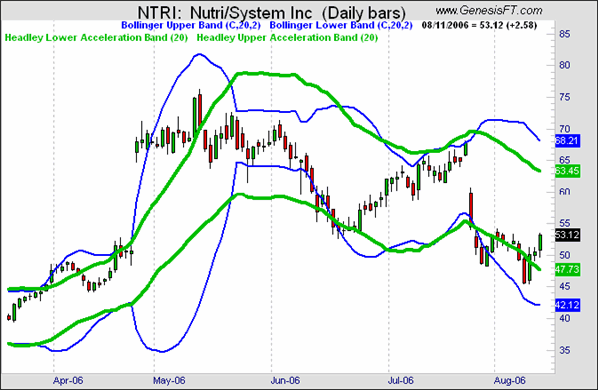In trading as in life, it pays to focus on making the most of your strengths, as opposed to trying to bolster your weaknesses. Those unique talents that we each possess are where our true opportunity exists. Read on for more on how the minority of your trades can create the majority of your results, and why a Success Profile is a good idea to spot more great trades in the future. In fact, I recently added a new indicator to my personal Success Profile.
Ever heard of the 80/20 Rule, also known as the Pareto Principle? Dr. Joseph Juran, the total quality management guru, developed the Pareto Principle after studying the work of Wilfredo Pareto, the nineteenth century economist. The Pareto Principle states that a small percentage of your efforts (typically around 20 percent) will create a large majority of your results (usually around 80 percent). Expanding Pareto to trading, it follows that roughly 80% of your profits should come from only 20% of your trades.
In options trading, the numbers can be even more dramatic. In my book Big Trends in Trading, I looked at all of my options recommendations over a 6-month period. Starting with a $50,000 account, investing 15% per trade, and including commissions, an investor taking all trades finished the six-month period with a total value of $216,560. In contrast, I sorted out just those trades which managed to gain 100% or more in that period. Notice that there are a number of 'half positions', per my goal of selling half of my position at a double or more to create the No-Risk Trade. Adding up all these full and half positions, there are 8-1/2 positions out of 64 than doubled or more in that period. That's 13.3% of my trades, and they accounted for more than 100% of my profits, as these trades alone totaled an account value of $245,982.
The lesson here is that in options buying, a small percentage of your trades, the best trades, can carry your total portfolio results. As you can see, if you exit these big profits too quickly, you would dramatically reduce your total profitability.
The 80/20 rule led me to create a "Success Profile" for my best winning trades, so I could seek to get more of these trades into my portfolio. At the same time, the remaining 80% of your trades that do not produce these big profits need to be evaluated, in order to determine how quickly you can get rid of them. As soon as my Success Profile breaks down for a stock or options position, I am exiting that position. This is the case even if the position is still profitable, because I'm seeing that the pattern no longer holds. That capital will be better used in a fresher situation with better opportunity to grow more quickly.
More recently, I've noticed that one indicator combination that I like to see is when I plot Bollinger Bands together with my Acceleration Bands. For a great uptrend, the stock moves the most when the Bollinger Band (in blue in the chart below of NutriSystem (NTRI) is above the Acceleration Band for bull trends or below the lower Acceleration Band for bear trades. The timeframes should be equivalent, here 20 days for both bands. Recently I recommended puts on NTRI, partly driven by this confirmed acceleration to the downside. My money management rules caused me to scale out at a gain of +80% on average, before the stock bounced bak up the last few sessions. Indicators like these can open your eyes to when a stock is truly in a big trend, versus being stuck in a trading range.
NutriSystem (NTRI) 20-Day Acceleration Bands (in green) and Bollinger Bands (in blue)

Price Headley is the founder and chief analyst of BigTrends.com.